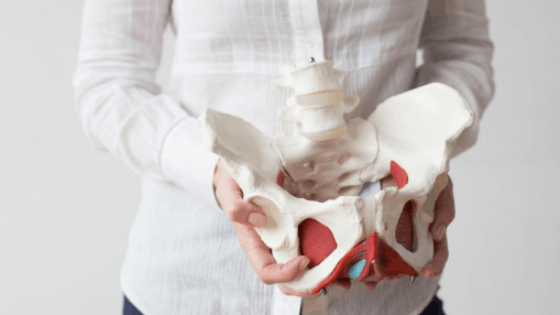
To Kegel or Not to Kegel?
So you have heard about the importance of your pelvic floor. Amazing!
It has taken us a long time to get to a point where clients recognize the signs of a dysfunctional pelvic floor. Better yet, maybe you are coming in to see a pelvic therapist preventatively and have already started to do kegels.
In case you haven’t heard of them, kegels are a form of exercise that strengthen the muscles that make up your pelvic floor. What you may not know though is that kegels are not for everyone. In fact for years they have been over prescribed and can actually make your symptoms worse.
Are kegels right for you?
Well it is hard to know what’s wrong with the engine of your car without lifting your hood. Similarly, we can’t accurately assess why your pelvic floor is causing you difficulty. Be it incontinence, painful sex or low back pain, without doing a proper internal assessment.
An internal assessment is the only way we can properly assess the tone and strength of your pelvic floor. Internal assessment is considered the gold standard for diagnosis by the Society of Obstetricians and Gynaecologists.
When patients undergo an internal assessment, we generally find that pelvic floor conditions fall into one of two camps:
1. Patients tend to be weak and require strengthening. Patients who exhibit weakness may have symptoms including stress incontinence (leaking when you cough, sneeze or jump) and pelvic organ prolapse (the lowering of organs such as the bladder, rectum, or uterus). Kegels and other forms of pelvic strengthening may be appropriate in these scenarios.
2. Patients may have increased muscle tone and would do better to avoid strengthening in favour of stretching and relaxation. Some expressions of a tight pelvic floor might include urge incontinence, low back or hip pain, painful intercourse, difficulty using menstrual products and painful periods. In these cases, kegels may not be helpful and can further tighten an already tight system, worsening your symptoms.
For clients with tight pelvic floors, muscle tone can be the result of a number of different things. While it may be the result of physically tight musculature, fascia or connective tissue, studies have also shown a correlation between increased muscle tone and stress, depression and anxiety. It could also be caused by an overactive nervous system with lowered thresholds. That repetitively send messages to the pelvic floor.
It may also be trauma-induced or a result of behavioural adaptation a.k.a. “Go to the bathroom before we get in the car Suzie.” All of which can result in tight, spastic or overly responsive muscles.
Whatever the case, rarely do kegels work in these instances.

7 Solutions for a Tight Pelvic Floor
So what does work? If you are someone who has a high tone, the following be better treatment options to manage pelvic floor dysfunction successfully.
1. Manual Stretching and home stretching exercises: In cases of high tone we often want to lengthen the muscles of the pelvic floor. This may be done by digitally stretching out the tissue (either by your therapist or by yourself). Or doing exercises that will put your pelvic floor on stretch such as a deep squat or knees to chest stretch.
2. Scar mobilization: We know that 85% of women who deliver vaginally experience some sort of perineal trauma which may lead to scar tissue. Cesarean scar tissue can also limit mobility. Regardless of your type of scar, very few women are instructed on how to mobilize their scar. But left on it’s own, scar tissue can be a point of fixation which minimizes movement.
3. Breath work: Our pelvic floor is closely tied to our diaphragm and ideally we want to mobilize the two in a synchronized fashion. Breath work can draw attention back to the pelvic floor as well as help to oxygenate the muscles. In addition, deep breathing can have a calming effect on the nervous system.
4. Meditation, prayer and chanting: Whether you are religious or not, the ability to take yourself out of your body and focus on something other than your physical body has a self regulating effect on the nervous system. Studies have shown that these practices have a positive effect on reducing pelvic floor tone.
5. Movement: We always recommend 20 minutes of light, pain-free movement but like all things, not all movement is created equal. High intensity exercises like running and jumping can be too intenseon a pelvic floor that is constantly tight. Yoga, tai chi and qi gong are better options that focus on stretching the muscles of your pelvic floor.
6. Forest bathing: Forest bathing is a fancy way of saying getting out into nature and studies have shown that doing exactly that can have a positive effect on the underlying sources of high pelvic floor tone. So grab your hiking boots and go for a leisurely walk in the woods or if you are a city dweller, a hike through your favourite park.
7. Biopsychosocial therapy: In some cases, working with a pelvic floor therapist may not be enough. If your high tone is associated with a mental health, challenging relationships or trauma, working with a therapist may also be a good idea. That can help reduce the tone of your muscles by addressing the underlying source. Your pelvic floor therapist should be able to provide a referral if needed.
Whatever your solution may be, make sure you are well informed before starting to self treat your pelvic floor. It is important to learn the state of your pelvic floor with an internal assessment. You want to make sure your well-intended kegels aren’t doing more harm than good.
About the writer:

Melanie Stevens Sutherland, Clinic Director & Senior Orthopaedic and Pelvic Floor Physiotherapist, Body Co. graduate of McMaster University and brings 16 years of experience as a senior physiotherapist to Body Co.
Following the birth of her own children, Melanie developed a strong interest in women’s health. She has taken specialized courses in pelvic floor physiotherapy and women’s nutrition. She is passionate about helping women find strength and confidence in their postnatal bodies following pregnancy and delivery.
To book an appointment with Melanie or learn more about the services and team at Body Co, please visit bodycotoronto.com. For more information on similar topics, follow us on social media on facebook, Instagram and twitter.
DISCLAIMER: THIS BLOG POST DOES NOT PROVIDE MEDICAL ADVICE
The information, text and images and other material contained on this page are for informational purposes only.
If you like this post and you would like to read more content like that, please subscribe to my mailing list here
- The Perfect Apple Crumble Recipe - September 25, 2025
- Fall Foliage Spots Toronto and GTA - September 21, 2025
- Fall Family Activity: Apple Picking! - September 20, 2025




Facebook Comments